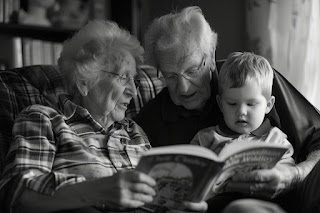Exploring the Literary Landscape: Introducing Primary School Children to a World of Genres
In the enchanting realm of literature, there exists a diverse tapestry of genres and styles, each offering a unique journey of discovery and imagination. For primary school children, exploring this literary landscape is not only an exciting adventure but also a valuable opportunity to broaden their horizons, nurture their love for reading, and develop essential literacy skills. At our school, we are dedicated to cultivating a passion for reading by introducing children to a variety of genres through themed reading lists and engaging discussions. Let's delve into how we embrace the magic of genre exploration in our classrooms.
1. Diverse Reading Lists for Every Age:
We believe in the power of curated reading lists tailored to the interests and reading levels of each age group. From Year One to Year Six, we offer a selection of books spanning various genres, including fantasy, mystery, science fiction, historical fiction, and non-fiction. These reading lists serve as roadmaps for children as they embark on their literary adventures, guiding them through a rich tapestry of storytelling and discovery.
2. Themed Reading Rotations:
To immerse children fully in the world of different genres, we adopt a structured approach to genre exploration. Each half term, we focus on a particular genre, diving deep into its themes, conventions, and storytelling techniques. For example, we may spend six weeks delving into the realm of fantasy, where children can embark on magical quests, encounter mythical creatures, and explore fantastical worlds. We then rotate to a new genre, ensuring a well-rounded literary experience throughout the school year.
3. Encouraging Discussion and Reflection:
Reading is not merely a solitary activity but a communal experience that thrives on shared insights and perspectives. That's why we encourage children to read books from the genre of the moment and then come together to discuss their thoughts, reactions, and interpretations. Through group discussions, peer interactions, and classroom activities, children gain a deeper understanding of the themes and motifs present in each genre, fostering critical thinking and communication skills.
4. Embracing Poetry and Non-Fiction:
In addition to fiction genres, we recognise the importance of incorporating poetry and non-fiction texts into our genre exploration. Poetry sparks creativity, rhythm, and imagery, while non-fiction offers opportunities for inquiry, research, and real-world connections. By including these genres in our reading rotations, we provide children with a well-rounded literary experience that stimulates curiosity and cultivates a love for learning.
5. Fostering a Lifelong Love for Reading:
Our ultimate goal is to instil in children a lifelong love for reading that transcends genres and spans generations. By exposing them to a wide range of literary genres, styles, and voices, we empower children to become discerning readers who appreciate the beauty and diversity of literature. Through genre exploration, we open doors to new worlds, expand horizons, and ignite the spark of imagination that will accompany them on their reading journey for years to come.
Exploring different genres is a cornerstone of our approach to literacy education, enriching children's minds, hearts, and souls. Through themed reading lists, structured rotations, lively discussions, and a diverse range of genres, we nurture a love for reading that knows no bounds. So, let's embark on this literary adventure together, where every page turn brings us closer to the magic of storytelling and the joy of discovery.





Comments
Post a Comment
Hi there, Thanks for taking the time to share.